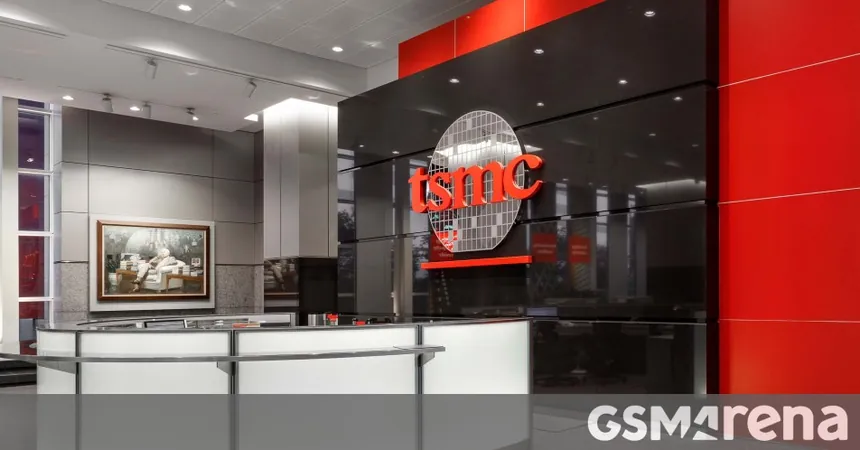
TSMC Achieves 60% Yield in Groundbreaking 2nm Chip Trial Production! What’s Next for the Tech Giants?
2024-12-09
Author: Li
TSMC's Breakthrough in 2nm Chip Production
Taiwan Semiconductor Manufacturing Company (TSMC) has announced an impressive breakthrough in semiconductor technology with a successful trial production of its cutting-edge 2nm N2 chips, boasting a 60% yield rate. Sources within the supply chain confirm that the results exceeded expectations during the trial conducted at TSMC’s state-of-the-art facility located in Baoshan, Hsinchu County, Taiwan.
Industry Implications
This advancement is not just a technical feat; it signifies a leap forward for the industry as TSMC prepares to roll out mass production of its 2nm chips at another facility in Kaohsiung, Taiwan, set to begin next year. Industry giants like Apple and Nvidia are already preparing to take advantage of this technological leap, with expectations that they will be among the first to integrate these chips into their next-generation products.
Product Launch Speculations
As speculations surface, it’s whispered that the upcoming iPhone 17 Pro models were initially slated to feature TSMC’s advanced 2nm chips. However, the latest insights suggest that consumers will actually see these chips debut in the iPhone 18 Pro, scheduled for release in 2026. This delay likely reflects TSMC’s commitment to ensuring that the technology reaches its potential before wide-scale implementation.
Cost Implications
In terms of cost, these next-generation chips come at a premium, with rumored prices potentially reaching up to $30,000 per wafer—twice the cost of their previous 4nm and 5nm counterparts. This pricing could shift the landscape in the smartphone and computing industry, pushing companies to evaluate their production and pricing strategies.
Future Outlook
With increasing reliance on advanced technology and the surge in demand for high-performance computing, TSMC's success with its 2nm process could reshape the future of tech products. Keep your eyes peeled for upcoming announcements, as this technology promises to redefine performance benchmarks in the semiconductor domain!


 Brasil (PT)
Brasil (PT)
 Canada (EN)
Canada (EN)
 Chile (ES)
Chile (ES)
 España (ES)
España (ES)
 France (FR)
France (FR)
 Hong Kong (EN)
Hong Kong (EN)
 Italia (IT)
Italia (IT)
 日本 (JA)
日本 (JA)
 Magyarország (HU)
Magyarország (HU)
 Norge (NO)
Norge (NO)
 Polska (PL)
Polska (PL)
 Schweiz (DE)
Schweiz (DE)
 Singapore (EN)
Singapore (EN)
 Sverige (SV)
Sverige (SV)
 Suomi (FI)
Suomi (FI)
 Türkiye (TR)
Türkiye (TR)